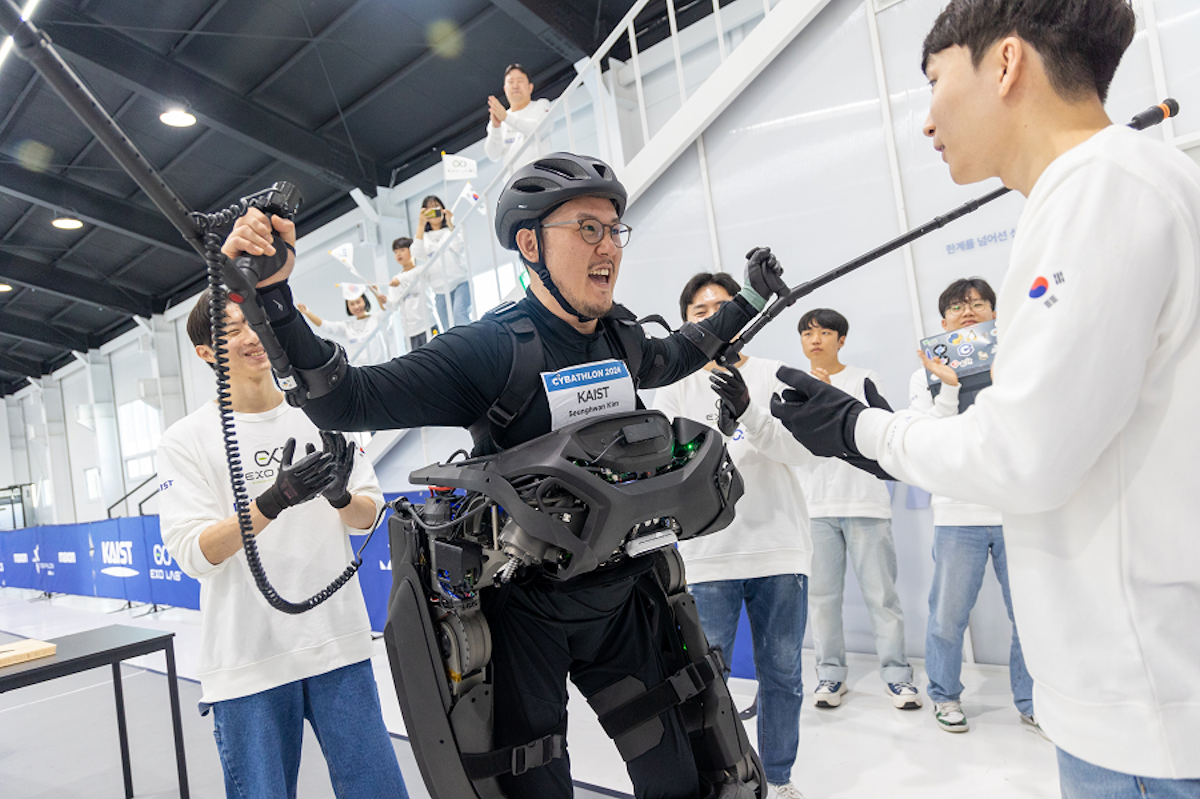Exoskeletons help paraplegic patients to walk for years, but the latest development from Kaist is a little different. The return follows F1, which can become a patient sitting in a wheelchair, wrap around the legs and body and get the users up and walk.
Professor Kyoung-Chul Kong of the Kaustian Ministry of Mechanical Engineering has been working on exoskeletons for about ten years, the first Walkon follows the dream in 2016. By 2020 in Switzerland.
This “Cyborg Olympics” began in 2016 ETH Zurich to lead to progress in Assive Technologies. The first event took place near Zurich and an attractive team from 25 nations and saw 66 “pilots” competet for reflector. Four years later, wearing the Kaist pilots Walkon watches 4.0 in the first and third place in the exoskeleton race. The third Cybathlon took place this weekend last weekend, while the team of Professor Kong was based on the latest development from Walkon Engineers.
Walkon follows F1: Exoskeleton of the next generation that walks alone
Where other exoskeletons require helpers to raise patients with paray from trolleys before attaching them to auxiliary devices, the Walkonian suit F1 can “walk alone as a humanoid robot” and approach the patient. It is equipped with a front docking system that means that the paraplegic user can remain at sea because exoskeleton is installed around the patient’s body and legs.
There is a system on the site “that actively controls the center of his weight against gravity” to prevent it from overthrowing when the user is assisted in position. The total balance was improved to allow the use of both hands, while in an upright position, along with short explosions without the need for a supporting stick. Powerful engines and control algorithms have been significantly improved compared to previous versions and even setting up sports vision to detect obstacles.
Kaist
Paklegic Seunghwan Kim – Research worker in the field of utility laboratory – worked as a pilot for the Exoskeleton competition in Exoskeleton 2024. Although some teams took a trip to Switzerland to compete with the professor Cong To commercialize wearable robots, Angel Robotics.
The teams were attacked by the completion of various missions in a close period of time, including “movement alongside narrow chairs, moving boxes, freely walking crutches, walking through a narrow door and closing behind and working to prepare food in the kitchen. ”

Kaist
Kim and Walkon watched F1 for 6 minutes and 41 seconds before he finished all the missions, and secured the first place. The second place went to the Swiss team and the third to Thai engineers, although Neith Yeter managed to complete all the tasks in Alited for 10 minutes.
“Various know-how technologies and basic technologies accumulated in preparing for this competition are to contribute to further development and spread of wearable robots, causing the imagination to draw from the future of wearable robots and how it can change our everyday life,” Kaist Press remakes with Details of victory.
Walkon follows F1: Exoskeleton of the next generation that walks alone
Source: Kaist

